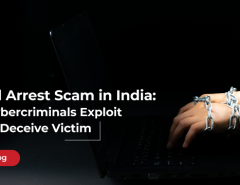Traditionally, any discussion about network security is focused on a specific model that organizations have largely internalized. This model is boundary or parameter-based model and assumes of a perimeter or a boundary outside a network. By this model, cybersecurity basically aims to strengthen this parameter with the thinking going that all entities outside this invisible perimeter are hostile and all those inside are trusted.
However, this traditional security model has increasingly looked outdated in an era of severe data breaches which have cost a number of big-name companies significant pain and loss of money. The reason for this is that today’s world is more connected than ever before which means the concept of silos is slowly fading. Servers and networks are interconnected with other third-parties which means it’s often difficult to maintain this invisible perimeter and keep an organizational network safe.
Trust no one
That is why the “zero trust” model has becomingly increasingly popular. Introduced by American market research giant, Forrester Research, the zero trust network model eliminates the concept of a perimeter and calls for enterprises to inspect all network traffic without any classifications of “inside” and “outside”. Basically, no user or traffic is considered “authorized” and all access to a specific network is governed by the same set of rules. Basically, there is “zero trust” in this model – all traffic to the network is untrusted and must be validated before allowed entry.
A zero trust network automatically assumes that all users and data traffic are operating from an unsecured network and hence all network traffic is encrypted. That means the cybersecurity architecture is significantly tougher – users have to validate their credentials every single time they want to access the network and there is often multi-factor authentication. While this may seem a little too difficult for organizations who still use a traditional perimeter defense, the zero trust model is rapidly carrying on and becoming more and more important.
Here are some steps that can be taken to build a zero trust network for an organization:
- Identification of Sensitive Data – The first and most critical step is the identification of sensitive data within the enterprise. The key information that is required is how this data is stored, how it is used and by whom, how sensitive it is. Then this data needs to be classified.
- Data Flow Across The Network – By understanding data flow across the network, enterprises can understand which stakeholders require what kind of data and are a good preparation before employing a zero trust model.
- Design for a Zero Trust Network – It is important that a zero trust network is designed based on its requirements. This would mean identifying where microperimeters are placed, depending on the flow of the data. That is why a zero trust network will require structural change right at the beginning and is difficult to be incorporate in the middle of an existing model.
- Access Control – Access control becomes the most component of a zero trust network. Since access is provided on a restrictive and limited need-to-know basis, which means policies must be formulated about what kind of user gets what kind of access and its limitations.
- Continuous Monitoring – A zero trust network requires constant monitoring and reviewing of the network situation, because in this type of system, all traffic is important, not just external traffic. Hence, monitoring is important to find the source behind all traffic with the means to flag anything unusual, whether internal or external.
As an IT security partner for your business, Seqrite provides comprehensive security from advanced cyber threats. To know more



